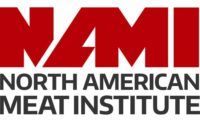Media stories about the sustainability and environmental impact of meat production are often rife with misinformation, myths and inaccuracies. To help improve the accuracy of reporting on these issues, the North American Meat Institute (NAMI) has released a new Media MythCrusher document, reviewed by environmental experts, outlining ten common myths and the data correcting them.
“With so many different definitions and numbers shared around the world, it is hard for reporters to navigate what the research shows on the environmental impact of meat production,” said Eric Mittenthal, NAMI vice president of public affairs. “The new Media MythCrusher is an easy to use resource with links to key research and data that shows the positive trends of greenhouse gas reductions in the industry over many years.”
The most common myth seen throughout the media dates back to the 2006 United Nations (UN) report, "Livestock's Long Shadow” which said that livestock contribute 18 percent of greenhouse gas (GHG) emissions worldwide, a greater percentage than transportation. This number has been widely challengedby scientists who point out that the UN produced its numbers for the livestock sector by adding up emissions from farm to table, but its transportation analysis did not similarly add up emissions from well to wheel.
Regional environmental impacts also vary significantly from worldwide data. According to U.S. Environmental Protection Agency, all of agriculture contributes nine percent of America’s GHGs while livestock production accounts for 4.2 percent of GHGs. By contrast, transportation accounts for 27 percent and energy production is 31 percent. The differences between U.S. and worldwide numbers are due to technologies and production efficiencies utilized in the U.S.
“A close look at the data shows that the environmental impact of the meat industry has declined considerably over the last 40 years,” said Mittenthal. “Specific to beef, the industry has produced 13 percent more total beef from 30 percent fewer animals, using 19 percent less feed; 33 percent less land; 12 percent less water; and nine percent less fossil fuel energy with an overall carbon footprint reduction of 16 percent.”
The new MythCrusher document supplements the library of six Meat MythCrusher videoson environmental topics produced by NAMI and the American Meat Science Association.
The Meat Institute has also developed similar Media MythCrusher documents addressing myths about antibiotic use in livestockand bacteria on fresh meat.All of these resources are available on the Meat Institute fact sheet page.
Source: NAMI


Report Abusive Comment